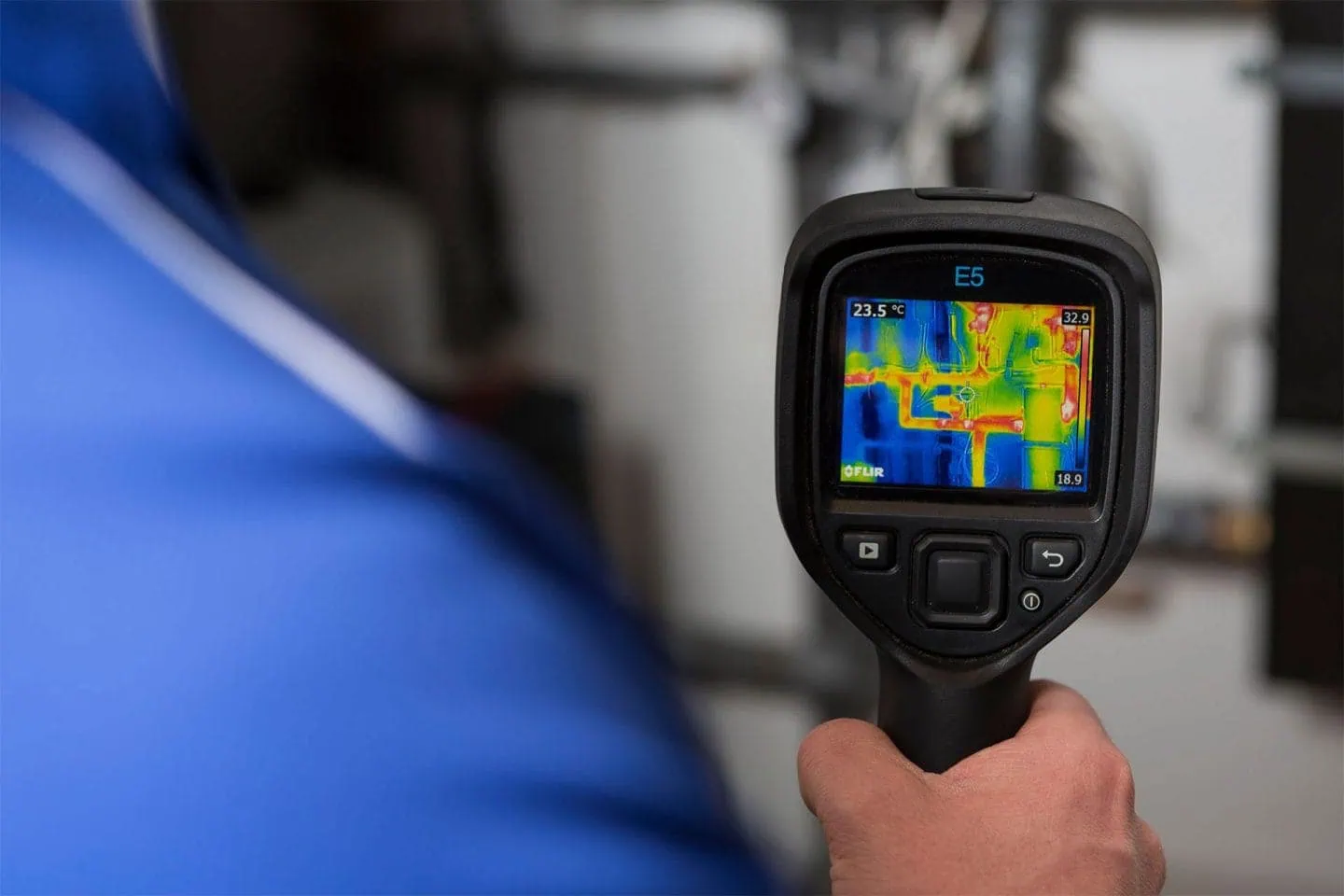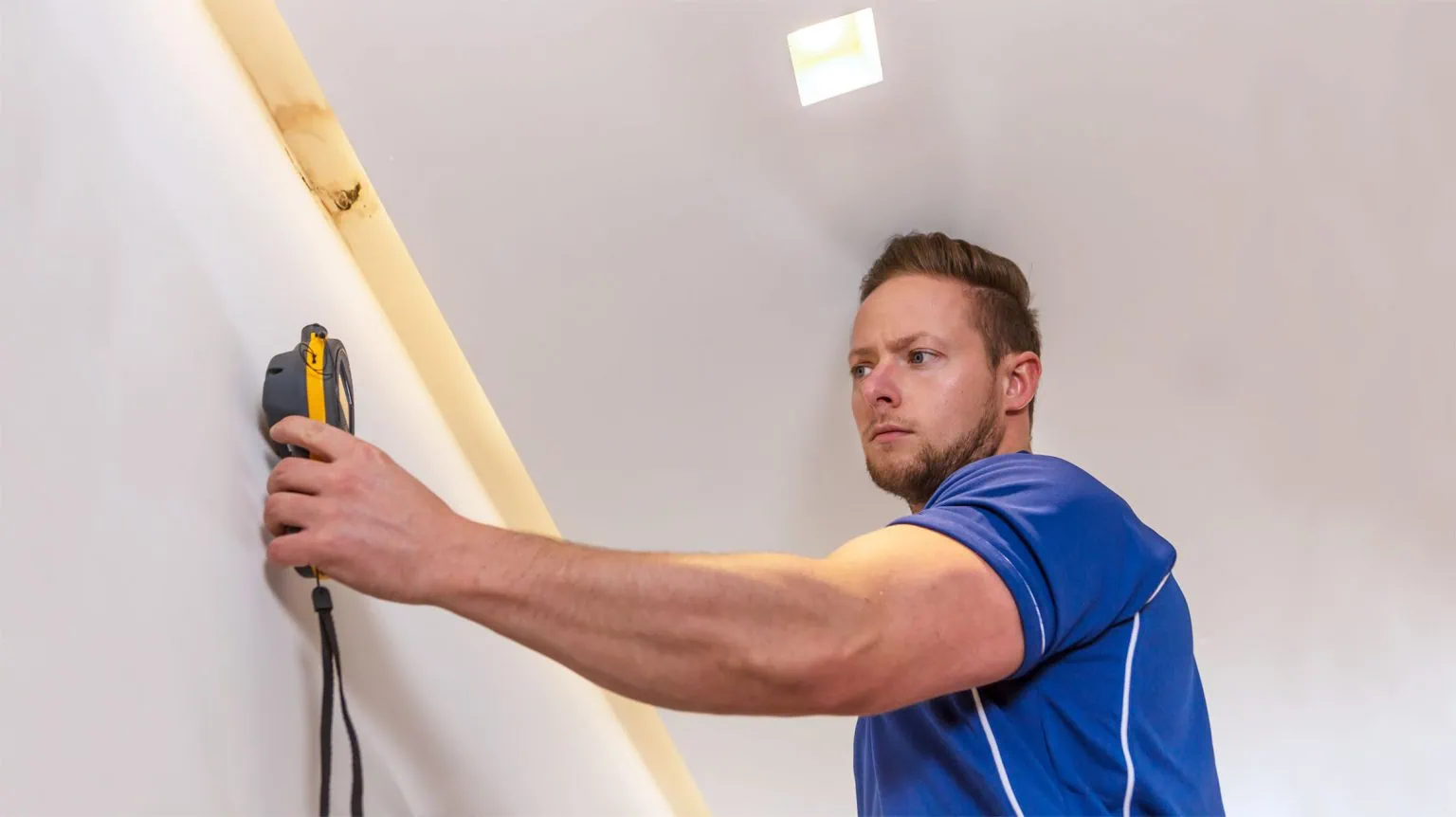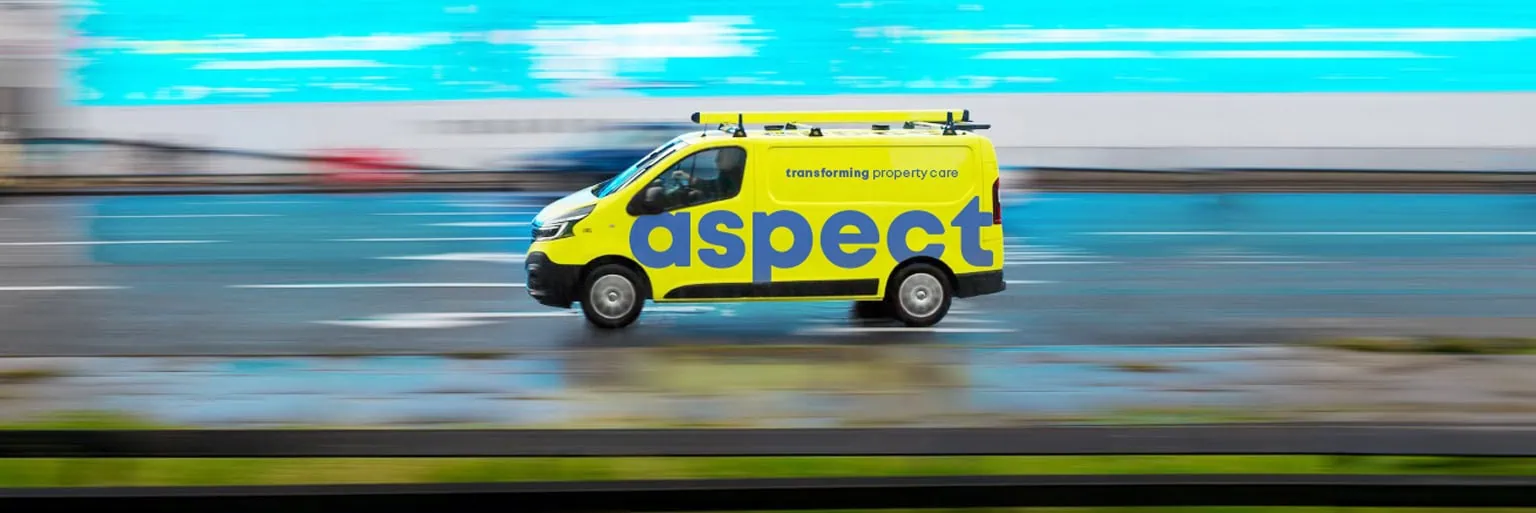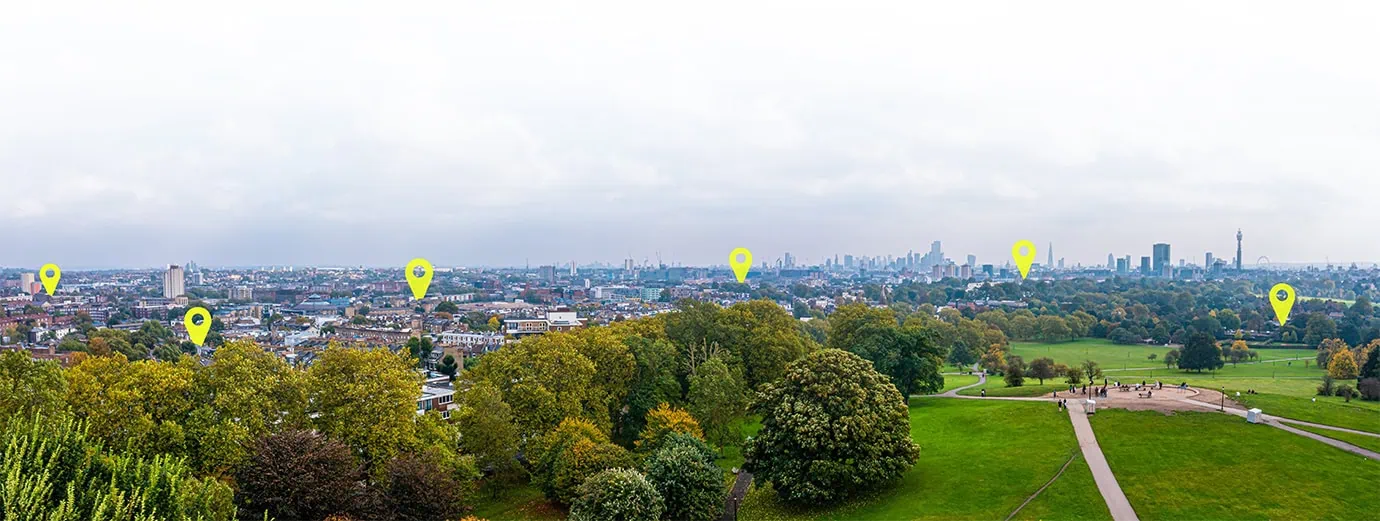What are the risks of ignoring a leak?
There are many reasons why a water leak should not be ignored. Remember, the visible signs of a leak may be hiding bigger problems:
- Health risks: Mould and mildew growth in damp conditions can be a serious health risk to young and elderly people, or those with respiratory conditions.
- Structural damage: Building fabric, including timbers and masonry, can weaken and lose its structural integrity in permanent high-moisture conditions.
- Electrical issues: If water comes into contact with parts of an electrical installation, short circuits, fire risks, and potential electric shock risks can occur.
- Higher repair costs: Moisture from a leak gradually spreads throughout a property, leading to more complex repairs. The spread of moisture is not visible at lower saturation levels.
- Insurance denial: When a leak is suspected, policyholders are usually required to act quickly to mitigate damage, and a claim can be refused due to higher repair costs.
- Furniture damage: If a leak is ignored and left unresolved, moisture, mould, and mildew will damage furniture, carpets, and other belongings.
Who can find hidden leaks in my property?
Our leak detection experts use various non-invasive methods to find concealed and hard-to-find leaks. They are all certified tradespeople with years of experience. Our leaks, damp, and restoration division includes expert plumbers, drainage engineers, heating engineers, and roofers.
How long does a leak detection investigation take?
The time required for an investigation depends on factors such as the type of leak, the size of the property, and the complexity of the building’s structure.
As a guide, a bathroom leak in a typical semi-detached house might take up to 4 hours to locate, whereas a leak in a commercial mains water supply pipe can take more than a day.
An estimated total investigation time can usually be provided after the first 2 hours.
How much does leak detection cost?
Our leak detection investigations are charged in half-hour increments, so the cost depends on the time it takes to trace the leak and identify the cause.
Specialist tracer gas is sometimes used to pinpoint leaks, which is charged for, along with any materials used in any repairs undertaken. Surveys are generated while at the site, so there is no additional charge for the report.
What equipment is used for leak detection?
Various non-invasive methods are used during an investigation. Based on the findings of each test, a methodical approach is taken. Each investigation uses several tests, some of which are used in specific situations.
The equipment includes moisture meters, salts analysis, pressure test kits, thermal imaging cameras, acoustic tests, tracer gas tests, and dye test kits. Voltage test equipment is used for leak detection on flat roofs.



